Research Article 
 Creative Commons, CC-BY
Creative Commons, CC-BY
Formulation and Evaluation of Herbal Chewing Gum
*Corresponding author:Vijay Metkari, Assistant Professor, Adarsh College of Pharmacy, Vita, Sangli, India.
Received:May 08, 2023; Published:May 17, 2023
DOI: 10.34297/AJBSR.2023.18.002526
Abstract
Chewing gum is a mobile drug delivery system. It is potentially use for administrating drugs either locally or systematically via, the oral cavity. Herbal chewing gum has through the year gained increased acceptance as a drug delivery system. Several ingredients are now incorporated in herbal chewing gum. The aim of this study was to formulate herbal chewing gum using cinnamon oil and to prove its antibacterial property effectively at low dosage. Because cinnamon oil is a greater antibacterial agent against the Streptococcus mutans that causes tooth decay. The herbal chewing gum of cinnamon oil is prepared using different concentrations of cinnamon oil and yastimadhu. The prepared chewing is evaluated for different parameters like color, stickiness, weight variation, hardness, and in vitro drug release. In vitro drug release was performed by modification dissolution apparatus. It was seen that in formulation f2 drug release was increased compared to formulation f1 and f3. The formulation shows maximum drug release of 93% in 14 min. compared to all other formulations. So, chewing gum is used in the treatment of local disease in the oral cavity.
Keywords: Chewing gum, Cinnamon oil, Antibacterial
Introduction
Many supporters of herbal medicines argue that products with a long history of popular use are generally safe when used properly at common therapeutic doses. Drug can be administered via different route of administration to produce a systemic pharmacological effect. The most common route of administration of drug is oral route. In which the drug is swallowed, and it enters in systemic circulation there are various dosage forms which can administered orally. Out of which chewing gum is most popular. It is potentially useful means of administering drugs locally and systemically [1]. Herbal chewing gum is a novel drug delivery system containing gum base with pharmacological active ingredient and intended use for local treatment of mouth diseases or systemic absorption through oral mucosa. Herbal chewing gum is considered as a vehicle or a drug delivery system to administer active principles that can improve health and nutrition [2].
Chewing gum is a soft, cohesive substance designed to be chewed without being swallowed. Modern chewing gum is composed of gum base, sweeteners, softeners/plasticizers, flavors, colors, and, typically, a hard or powdered polyol coating. Chewing gum helps to improve intestinal motility, also helps to increase saliva flow which promotes more frequent swallowing. This helps to prevent reflux of acid from the stomach back into the throat. The results of scientific research demonstrate that chewing gum is good for oral health and teeth specifically. The use of sugar-free gum provides a proven anti-caries benefit, but other oral health effects are less clearly elucidated. Chewing sugar-free chewing gum promotes a strong flow of stimulated saliva, which helps to provide a number of dental benefits: first, the higher flow rate promotes more rapid oral clearance of sugars; second, the high pH and buffering capacity of the stimulated saliva help to neutralize plaque pH after a sugar challenge; and, lastly, enhanced demineralization of early caries-like lesions and ultimately prospective clinical trials have shown reduced caries incidence in children chewing sugar-free gum. additional mode of dental disease prevention to be used in conjunction with the more traditional preventive methods. Chewing gum seems to be associated with reduced chronic stress. There are a number of possible mechanisms through which chewing gum may affect stress, alertness and cognition, such as brain activity, exercise effects or demand characteristics. In addition, the length over which gum is chewed may moderate any effects [2,3].
Use Chewing Gum as a Drug Delivery System
Chewing gum provides new competitive advantages over conventional
drug delivery system:
a) Fast on set of action and high bioavailability.
b) Pleasant taste.
c) Higher compliance (easy and discreet administration
without water).
d) Ready for use.
e) High acceptance by children.
Fewer Side Effects
Low dosage gives high efficiency as hepatic first pass metabolism is avoided. Control release rate also reduces the risk of side effects. As high plasma peak concentration is avoided.
Systemic Effect
Active substances can be absorbed through the buccal mucosa or through the GI tract when saliva is swallowed. Once the active substance is present in the blood. Systemic effects can be obtained.
Fast Onset of Action
Fast onset of systemic effect is seen for active substances absorbed through the buccal mucosa. As the active substance passes by the jugular veins directly through the systemic circulation.
Local Effect
Chewing gum is an obvious drug delivery system for local treatment of disease in the oral cavity and in the throat. As sustaining the relies of active substance may deliberately prolong exposure.
Effect on Dry Mouth
Dry mouth is a side effect of many medicaments (antidepressant) and it is also part of symptomatology of several diseases (e.g. Sjogren’s syndrome–an autoimmune disorder characterized by lymphocytic infiltration of the salivary and lachrymal glands) chewing gum stimulate the salivary secretion thereby decreasing the dryness in the mouth.
Chewing Time and Chewing Rate
Time should me around 20-30min. The rate of chewing also affects the drug release. The average chewing rate is about 60 chews/ min.
Contact Time
The local and systemic effect depends on the time of contact of chewing gum in oral cavity. In clinical trial chewing time of 30 min. was considered close to ordinary use [3].
Types of Chewing Gum
Chewing gums come in a variety of flavors, shapes and sizes. There is no standard type of gum, but mostly is a small stick or wad of gum. Chewing gum is basically made by combining a water-insoluble phase with a water-soluble phase of sweeteners, flavoring and food coloring. Several types of chewing gum are designed for dental hygiene. There are gums to whiten teeth, clean teeth and fresh breath (Figures 1,2). The most popular flavors are mint, spearmint, peppermint, wintergreen, cinnamon, licorice, sour apple, cherry, grape, orange, watermelon, strawberry, lemon, and blueberry [4] (Figure 3).
Advantages
a) Chewing Gum Could Help Protect Your Teeth and Reduce
Bad Breath. especially for those who like strong flavored foods
like onions and garlic. Chewing gum is very effective to neutralize
the odor. Chewing sugar-free gum could help protect your
teeth from cavities. This is because sugar feeds the “bad” bacteria
in your mouth, damaging teeth. chewing sugarless gum
stimulates saliva flow, which reduces plaque and helps prevent
cavities.
b) Chewing gum can be firmly attached, so it can clean up
leftover food on the tooth surface.
c) When chewing gum, oral cavity repeatedly biting movement,
increases blood flow in the face, and also trained the
muscles for chewing and biting.
d) Children who chewed gum for a long time, will most likely
have a habit of grinding teeth during sleep because the muscles
of the mouth in a state of tension, so that i Can affect the quality
of sleep. But children do not chew gum more than 3-4 times a
day and does not exceed 10-15 minutes.
e) High bioavailability: Drug gets directly absorbed from the
oral mucosa, preventing the degradation of drug from gastric
pH of stomach.
f) Pleasant taste: Addition of sweetening agent and coloring
agent enhances the organoleptic characteristic of the formulation.
g) Easy administration without water promotes higher patient
compliance.
h) High acceptance by children and for patients who find
swallowing tablets difficult are obvious.
i) Fewer side effects.
j) Systemic effect.
k) Local effect.
l) Reduce dry mouth (xerostomia).
m) Product distinctiveness from a marketing perspective.
n) People find relaxation and comfort in the simple act of
chewing gum.
o) It relieves muscular and nervous tension.
p) Ease to carry and transport.
q) Lesser cost of manufacturing compared to conventional
DDS.
r) Treat Halitosis.
Health Benefits of Chewing Gum
a) Chewing gum improves memory.
b) Chewing gum reduces symptoms of stress.
c) Chewing gum helps to manage weight.
d) Chewing gum improves digestion.
e) Chewing gum improves oral health.
f) Chewing gum improves oral Hygiene and prevent oral bad
smell.
g) Chewing gum helps in quitting smoking (Nicotine Chewing
Gum).
h) Treat Halitosis [1,3,5].
Disadvantages
a) Chewing gum causes you to swallow excess air, which can
contribute to abdominal pain and bloating seen with Irritable
Bowel Syndrome (IBS). This can cause bloating, an overproduction
of stomach acid, and can compromise your ability to produce
sufficient digestive secretions when you actually do eat
food.
b) At the time of chewing gum, sugar remains in the oral
cavity for a long time, then the bacteria in the oral cavity will
change the sugar into acid that will break down the calcium in
your teeth (enamel) causing damage to teeth.
c) Chewing gum can damage tooth fillings materials. Therefore,
for someone who uses dental fillings with mercury materials
should not chew gum. Since chewing gum can parse compound
of mercury, which can increase the amount of mercury
content in blood and urine.
d) Excess of these substances can be an overly negative influence
on the brain, central nervous system and kidneys.
e) Chewing gum, especially mint flavored, reduces a person’s
intake of healthy foods such as fruits and vegetables. Not only
this, it forces a person to eat more junk food. Leads To Joint
Problems Overuse of oral muscles can cause damage.
f) Chewing gum frequently causes a medical condition called
temporomandibular joint disorder. In this condition there is an
intense pain in the joints and muscles connecting the jaw to the
skull.
g) This can also cause indigestion and heart burn.
h) Headaches and Allergy Headaches and allergy are among
the few harmful effects of chewing gum. The excessive use of
chewing gum can also cause headaches and allergies. The reason
for this is that many preservatives, artificial flavors and artificial
sugars present in the chewing gum can lead to toxicity,
allergy and headache.
i) Spoils Your Teeth It is true that chewing gum occasionally
is good for your gums and teeth. However, excessive usage of
chewing gum can harm your teeth and can cause tooth decay.
The reason is the sugar coated on chewing gums allows the bacteria
to feed on your teeth causing their damage.
j) The artificial sweeteners such as mannitol and sorbitol
in chewing gum causes irritation to intestines. The continuous
irritation can cause diarrhoea and then dehydration due to the
loss of body fluids.
k) Releases Toxic Mercury Some people have fillings in their
teeth cavity, this filling is made of mercury, silver and tin. Excessive
chewing of a gum can remove this mercury from your
tooth filling into the body. Mercury is a very poisonous metal for
humans.
l) Children or teenagers who are addicted to chewing gum
have an irregular face development from their adulthood. Their
faces are larger than the normal ones as the excessive chewing
of a gum stimulates the jawbone and facial muscles. This is
among the worst side effects of chewing gum [1,3,5].
Materials
Gum Base
Gum base is an inert and insoluble nonnutritive product used as a support for the edible and soluble of the chewing gum (sugar and flavoring agent) other row materials. Gum base is made of a combination of food-grade polymers, waxes, and softeners. e.g., gum ghatti, chicle gum.
Yastimadhu
Licorice a sweet in taste. It is used as a sweetening agent. Soothes your stomach. Licorice root is used to soothe gastrointestinal problems. In cases of food poisoning, stomach ulcers, and heartburn, licorice root extract can speed the repair of stomach lining and restore balance. This is due to the anti-inflammatory and immune- boosting properties of glycyrrhizic acid. It is Reduces stress, assist cancer treatment, protect the skin and teeth. Demulcent and expectorant, Tonic, Laxative, Diuretic and emollient property, Spasmolytic agent, Cough and peptic ulcer. It is also used in Chewing gums, chocolate candy, cigarette and chewing tobacco.
Active Pharmaceutical Ingredient
Cinnamon oil shows a greater antibacterial activity against streptococcus mutans, the nasty bug the causes most tooth decay. But cinnamon oil irritates the mouth tissue. It is used as an antibacterial, astringent, antiseptic, immunostimulant, detoxifying agent, carminative, analgesic, antifungal, antidepressant, boost brain function, mouth freshener, pain relief, toothache, reduces ulcer, soothes sore throat, treats headache. e.g., Cinnamon oil.
Honey
Honey consists chiefly of a mixture of dextrose and laevulose (70-80%) and water (14-20%). contains sucrose (1.2-4.5), Dextrin (0.06-1.25%), volatile oil, pollen grains enzymes, Vitamins, Amino acids, Proteins, Coloring matters, etc. Honey is used as nutritive, Demulcent, Mild laxative, it is used as an important component of linctuses and cough mixtures, it is a sweetening agent, antiseptic and bactericidal. This is also used as a vehicle in Ayurvedic and Unani preparations, as a pill recipient, Recently, it is used in the preparation of creams, lotions, soft drinks and candies.
Sweeteners
Bulk Polyol Sweeteners are responsible for initial sweetness, whereas intensive sweeteners are intended for prolonging the sweetness effect. Intensive Sweeteners are often encapsulated to delay the release of flavor. The most important among these are that added sugar in chewing gum acts as a sweetener, preservative, texture modifier, fermentation substrate, flavoring and coloring agent, bulking agent. e.g., sugar.
Flavoring Agent
For taste and sensory appeal. Flavor components in gum exist in liquid, powder forms. A variety of flavoring agents are used to improve flavour in chewing gum. Carminative, Flavoring agent, Aromatic and stimulant. e.g., cardamom.
Coloring Agent
For visual appeal [1,6].
Method of Preparation of Chewing Gum
All ingredients were weight accurately as shown in formulation Table 1. Crush the gum base in the mortar pestle. Add adequate volume of distilled water and properly stir in the porcelain dish and add honey was mixed. The dish was kept in a water bath and temperature was maintained at about 35-45. The drug cinnamon oil was then added to the above mass. Corresponding amount of sugar, coloring agent and flavoring agent was added to the above mixture with continuous stirring up to 30 min. finally the adequate amount of flavor was incorporated in the mixture. The mass was poured into the mould and was allowed to cool at room temperature. The gum pieces were removed [2].
*Note: Quantities per chewing gum
Equipment
a) PH Meter.
b) Thermometer.
c) Orbital shaker.
d) Magnetic stirrer.
e) Centrifuge machine.
f) Weighing balance.
g) Monsanto hardness tester.
h) Disintegration apparatus.
i) UV Spectroscopy.
Glasswares
a) Beaker.
b) Porcelain dish.
c) Glass rod.
d) Water bath.
e) Pair of Tung.
f) Measuring cylinder.
g) Metal stand.
h) Ointment slab.
i) Ointment spatula.
j) Beaker.
k) Test tubes.
l) Volumetric flask (Figure 4, Table 1).
Evaluation of Formulation
Evaluation of Gum Base
Color: The color of gum base is pale yellow color [2].
Solubility Studies of Gum Base: The swelling power and solubility of gum base were determined according to leach et. (1959) with some modification as follows. An appropriate amount of dried sample was transferred into a per weighted centrifuge tube. Distilled water was added to give a total weight of mixture equivalent to (90g) and the mixture was stirred by a magnetic stirrer at (200rpm) to suspended the sample completely. The centrifuge tuber was then immersed in a water bath maintained at desired temperature for 30min. with continuous stirring. The stirring was removed and rinsed into the tube with sufficient distilled water to make the total weight of water equal. The tube was then stopped, inverted several times to mix the content, and centrifuged for one hour at 300rpm. The clear supernatant solution was taken decanted. An aliquot (25ml) of the supernatant was transferred quantitatively to a pre weighted porcelain evaporating dish. It was then evaporated to dryness on a steam bath and dried to constant weight at 70 (Table 2).
Physical Evaluation of Herbal Chewing Gum
The formulated herbal chewing gum was evaluated physically for the following parameters are mentioned in Table 3..
,Color: The color of herbal chewing gum formulation was observed visually, and all the batches were light pink in color which was acceptable [2].
Stickiness:The formulated herbal chewing gum was placed on plane surface. A mass of 250gm was hammered on it up to 10min, after 10min, sticking of mass to hammered surface was observed [7].
Weight Variation Test:Chewing gum from each batch were individually weighted on analytical balance. The average weight and standard deviation were calculated which was found in acceptable unit [2].
Plasticity/Hardness:The hardness of chewing gum was determined by Monsanto hardness tester and the average hardness and standard deviation were reported [2].
Percentage Drug Content:One gram of formulation taken in mortar, to this about 20ml of 6.8 phosphate buffer was added and triturate. This was transferred to conical flask. About 30ml of 6.8 phosphate buffer was added to this and shaken well for about 3 hours using orbital shaking incubator at 100rpm. Then was filtered and the filtrate was made up to make with the same buffer solution. Suitable dilutions were made, and the drug concentration was determined by measuring the absorbance at 279nm [8].
In Vitro Drug Release Studies:In vitro drug relies on testing apparatus for chewing gum, was a self fabricated apparatus which was a modification of disintegration apparatus. Here rigid basket rack assembly is supporting 6 cylindrical glass tube was replaced with the detachable stainless still road fitted with a Teflon bead which moves up and down vertically at 50 cycles per min. in the glass cylinder of 900ml capacity. Length of stainless still road can be adjusted by the adjusting screw which is positioned of the top of the stainless still road and is also used to fix the road to the disintegration apparatus. The base of glass cylinder was made up of Teflon. The temperature was maintained at 37±5. About 1 gm of formulation was placed in a glass tube between the Teflon bead and Teflon base to this about 900 ml of PH 6.8 phosphate buffer was added. 5ml of sample was withdrawn and replaced with 5ml of fresh PH 6.8 phosphate buffer at intervals (0, 2, 4, 6, 8, 10,12 and 14min.) absorbance was recorded by ultraviolet spectrophotometer at 279nm. And % of drug released was determined as a function of time [8].
Result and Discussion
All the formulations prepared by conventional method are light pink color, soft in nature and they show a good consistency, but sticky in nature, drug content of all the formulations were found to be in between % which is satisfactory (Tables 3-5).
(Figures 5-8) Drug release profile of formulation from F1-F3 shows in Figure 5-8. Formulation F2 shows the highest drug release compared to formulation F1 and F3. In all these formulations the amount of yastimadhu and cinnamon oil used in a different concentration this is effect on drug release. Cinnamon oil concentration also plays an important role in all formulation. F3 shows highest drug release of 93% in 14min [9,10].
Conclusion
Herbal chewing gum of cinnamon oil was successfully prepared by using different concentrations of cinnamon oil and yastimadhu. This effect on drug release profile. Based on the drug release profile of all the formulations, formulation F3 is the optimize formulation which produces maximum drug release in 14min. Thus, it is the better option to prepare cinnamon oil into herbal chewing gum to achieve better patient compliance and improve drug release.
Acknowledgement
None.
Conflict of Interest
No conflict of interest.
References
- wikipedia.com.
- AM Chanale, RP Mishra (2016) formulation and evaluation of herbal antibacterial chewing gum containing Neem extract. 5(1): 8-13.
- PK Pagare, CS Satpute, VM Jadhav, V Kadam (2012) Medicated chewing gum: A novel drug delivery system. journal of applied pharmaceutical science 2(6): 40-54.
- Vasudha Lakshmi S, Hemant K S Yadav, Mahesh KP, Abhay Raizaday, Navya Manne, et al. (2014) Medicated chewing gum: An overview.
- google.com.
- P Patel (2011) medicates chewing gum: A review 1(1): 111-128.
- Koppula Rajitha, Yamsani Madhusudhan Rao (2019) Formulation and evaluation of medicated chewing gum of chlorpheniramine malelate by melting method. 5(5): 1322-1329.
- S V Lakshmi, H KS Yadav, K P Mahesh, S Uniyal, A Ayaz, et al. (2014) Nagavarma, Formulation and evaluation of medicated chewing gum as antiplaque and antibacterial agent 6(4): 3-10.
- Farhad Mehta, C Kartikayen, Piyush Trrivedi (2011) Formulation and characterization of medicated chewing gum delivery of diphenhydramine hydrochloride. 2(1): 182-193
- Abolfaze Aslani, Alireza Ghannadi, Farnaz Rostami (2016) Design, formulation and evaluation of ginger medicated chewing gum. Adv Biomed Res 5: 130.

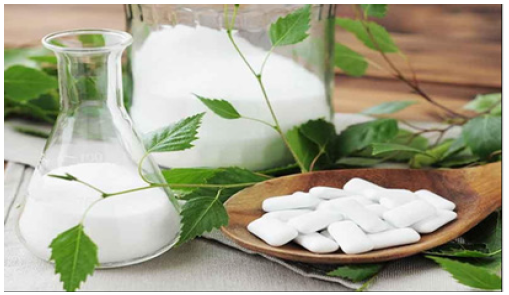
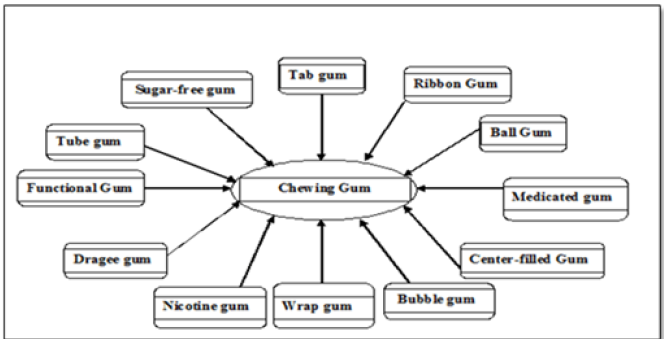
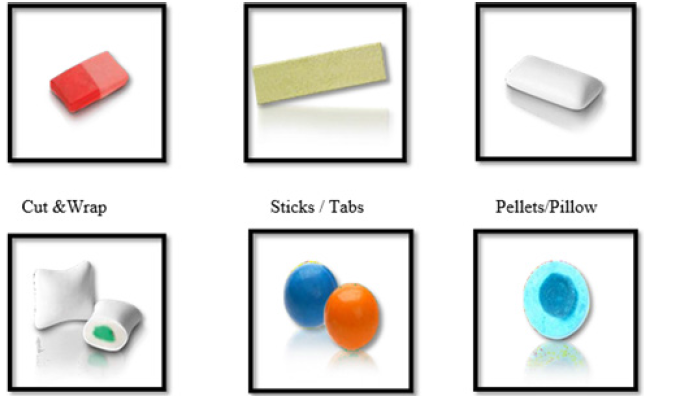

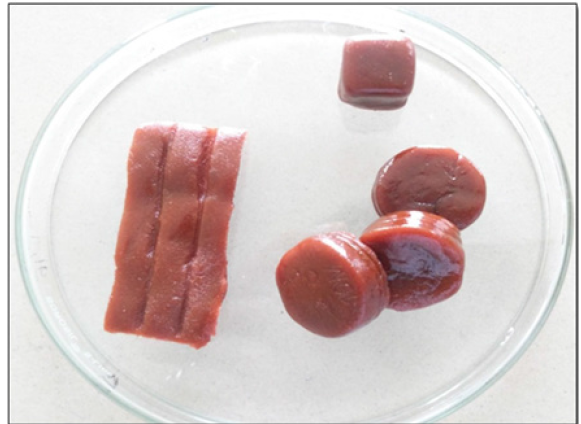




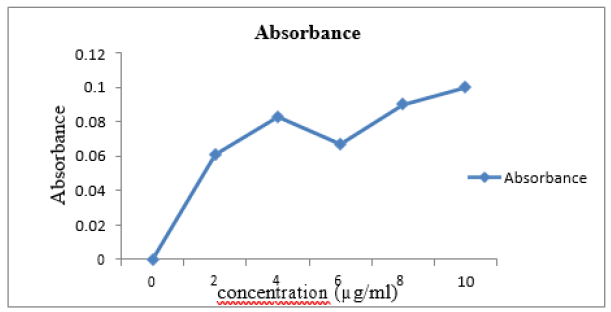
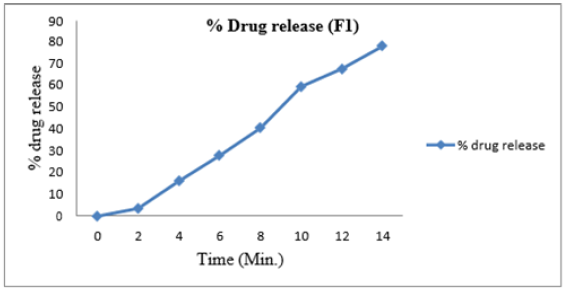

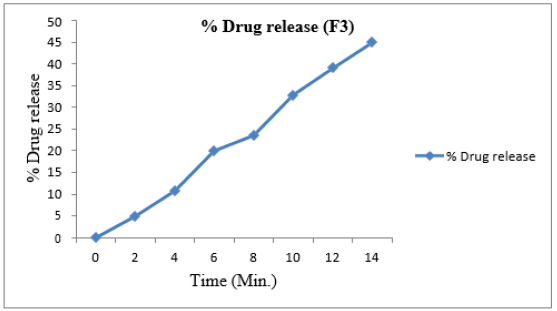


 We use cookies to ensure you get the best experience on our website.
We use cookies to ensure you get the best experience on our website.